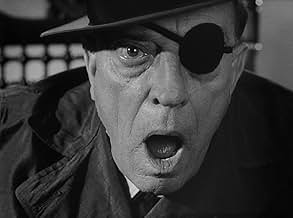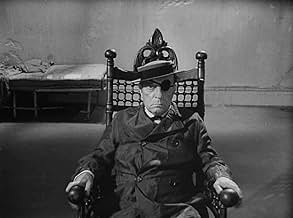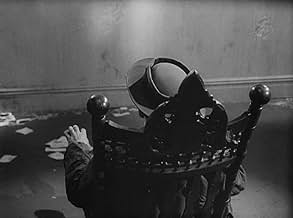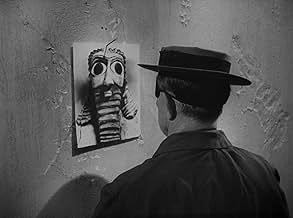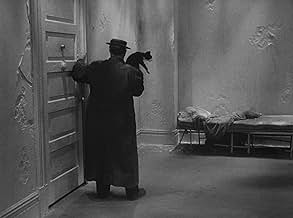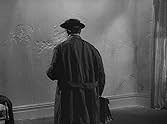Adicionar um enredo no seu idiomaA twenty-minute, almost totally silent film (no dialogue or music, save one 'shhh!') in which Buster Keaton attempts to evade observation by an all-seeing eye. But, as the film is based arou... Ler tudoA twenty-minute, almost totally silent film (no dialogue or music, save one 'shhh!') in which Buster Keaton attempts to evade observation by an all-seeing eye. But, as the film is based around Bishop Berkeley's principle 'esse est percipi' (to be is to be perceived), Keaton's ver... Ler tudoA twenty-minute, almost totally silent film (no dialogue or music, save one 'shhh!') in which Buster Keaton attempts to evade observation by an all-seeing eye. But, as the film is based around Bishop Berkeley's principle 'esse est percipi' (to be is to be perceived), Keaton's very existence conspires against his efforts
- Direção
- Roteirista
- Artistas
Avaliações em destaque
This is a homage to Buster Keaton by Samuel Beckett who is playing with the ideas of subject and object in a world where perhaps we have no control over who is doing the watching. Beckett had been influenced a great deal by the genre of comedy and acting that Keaton personifies. Many of his books and plays feature tramp-like, down-and-out characters and he uses the physical comedy routines of vaudeville and silent films of the early 20th Century in many of his works. He and Keaton both share the idea of man thrown into an uncaring world where they are left alone to survive among its absurdity.
However later Beckett stated : "Buster Keaton was inaccessible. He had a poker mind as well as a poker face. I doubt if he ever read the text - I don't think he approved of it or liked it. But he agreed to do it, and he was very competent." Buster had turned down overtures from Beckett before, but he was in debt, and the story is that his wife talked him into it.
Note actor James Karen as a reverend in the alley towards the beginning. Karen worked with Buster Keaton in touring productions of the comedy "Merton of the Movies" in the 1950s.
Beckett's work at that time was slowly gaining ground in Norway, as did Pinter's - trying to promote either was an uphill task in a mountainous country unused to modern drama and more tuned to sports. The discussions in a seminar after the showing proved this... But this resistance to something obviously alien did not detract from my pleasure (and several others') in relishing a masterpiece, where nothing could have been improved on. A book called "Film by Samuel Beckett" was published by Faber in 1971, and generously offers complete scenario and a profusion of illustrations and production shots. It has also comments by Beckett and an essay by Schneider, and is a useful substitute for anybody without access to the Film itself.
Agreeing with other commentators, I can only say that this is really an absorbing and disturbing experience - quite unique! And one that leaves you thinking and wondering and shuddering for a long time.
There's a perfect link of Beckett's intense focus on the self with Keaton's now-wizened features. When the screen is filled with Keaton's eye alone, you can see the wrinkles surrounding it; you can tell Beckett has more in mind than just doing a close-up. As Keaton arranges and rearranges the things in his sparse living quarters, and goes through pictures of himself, often hiding from the camera, you begin to see what's going on: is he, the character, only who he sees in the mirror, and in pictures, or is he other than that?
For this emphasis on the solipsistic, the length of Film is perfect. Any longer and it could have been a bit tedious. But Keaton lends it a few touches of his by now archetypal humor--wholly improvised--which Beckett found delightful, and Alan Schneider, the director, applauded. This is a unique work that any serious student of film should have in her/his library. It was formerly included in a VHS collection of Keaton's work but now, alas, does not seem to be available any longer.
Você sabia?
- CuriosidadesThe story of making "Film" was the basis of a play "The Stone Face" by Sherry MacDonald. The play was read in Orlando at the 2006 New Playfest, and work shopped at the 2007 New Playfest.
- ConexõesFeatured in Zomergasten: Episode #3.3 (1990)
Principais escolhas
Detalhes
- Tempo de duração
- 20 min
- Cor
- Mixagem de som
- Proporção
- 1.37 : 1

